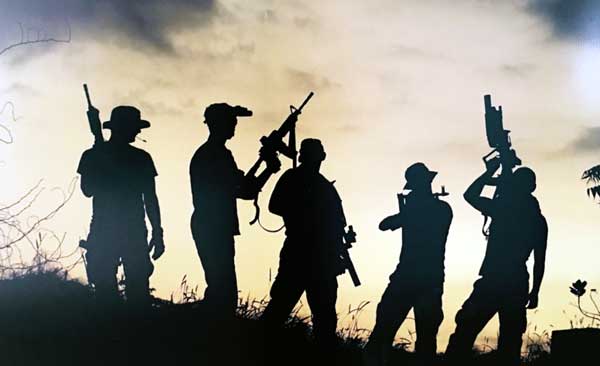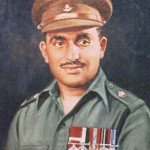IDR Blog
Theatre Commands take shape, Lok Sabha Clears Inter-Services Organisation Bill
As momentum gains for the proposed reorganisation of the Indian military into integrated theatre commands, the Lok Sabha on August 4 passed the Inter-Services Organisation (Command, Control and Discipline) Bill, 2023. It seeks to empower Commander-in-Chief and Officer-in Command of Inter-Services Organisations (ISOs) with all disciplinary and administrative powers in respect of the personnel serving in or attached to such organisations.Combat experience, both in war and Insurgencies, in varied terrains suggests to architect Tri-Service Theatre Commands as countervailing strategy to deter and offset adversary centric threats.
Introducing the Bill in the Lok Sabha, Defence Minister Rajnath Singh termed it as part of a series of military reforms being undertaken by the government with the aim to empower the nation. He described the Bill as an important step taken towards integration and jointness among the Armed Forces to face the future challenges in an integrated manner.
“The Bill empowers the Central government to constitute an Inter-Services Organisation,” the Ministry said. In this, the Bill acts as a precursor to the reorganisation of the military into integrated theatre commands on which there is consensus for the creation of two land-based intergraded commands and one maritime theatre command.
Currently, armed forces personnel are governed in accordance with the provisions contained in their respective Service Acts — The Army Act, 1950; The Navy Act, 1957; and The Air Force Act, 1950. “The enactment of the Bill will have various tangible benefits such as maintenance of effective discipline in inter-services establishments by the Heads of ISOs, no requirement of reverting personnel under disciplinary proceedings to their parent Service units, expeditious disposal of cases of misdemeanour or indiscipline and saving of public money and time by avoiding multiple proceedings,” the Ministry said.
The ‘ISO Bill-2023’ is essentially an ‘enabling Act’ and it does not propose any change in the existing Service Acts/Rules/Regulations which are time-tested and have withstood judicial scrutiny over the last six decades or more, the Ministry said.However, there is a need to reorganise MoD to avoid duplicity. Some of the serving armed forces officers from Major to Lieutenant General should be posted in the MoD to replace some of the Deputy Secretary to Additional Secretary level officers to get expert advice on matters military.
The Ministry further stated that the Bill would also pave the way for much greater integration and jointness amongst the three Services; lay a strong foundation for the creation of Joint Structures in times to come and further improve the functioning of the armed forces.
The Ministry said that the‘ISO Bill-2023’ shall be applicable to all personnel of the regular Army, Navy, and Air force, and to persons of other forces, as notified by the Central government, who are serving in or attached to an Inter-Services Organisation.
In high-level military reforms, the post of Chief of Defence Staff (CDS) was created in 2019 with the mandate of ensuring the “jointness” of the three services in operations, logistics, transport, training, support services, communications, repairs and maintenance. The top priority for the CDS is the proposed reorganisation of the armed forces into integrated theatre commands. With General Anil Chauhan taking charge as the second CDS, the stalled process has been put back on track and is in advanced stages.
However, according to strategic planning experts CDS should be a Five Star General.He has to be an experienced former Service Chief with extended tenure upto 65 years of age or three years fixed term, whichever is earlier. CDS role is that of an expert advisor on Military Warfare Strategy, combat technology and hard core professionalism to include Cyber and Space warfare aspects. Thus, the PM and the RM have a single – window of Expert domain advice on matters of inclusive National Security wherein no one else in India is qualified to do so on matters military. He should be inducted as a Member of Cabinet Committee on Security (CCS) for decision making on Inter Services Coordination, Strategic Planning, Cyber Security and Nuclear Warfare.
Jointness and integration is achieved through tri-service organisations such as the Integrated Defence Staff. The creation of the post ofCDS in January 2020 was seen as a major push for the indigenous joint warfare and theaterisation process of the Indian Armed Forces.The recommendations of Kargil Review Committee promoted increasing jointness and integration. Subsequent committees such as the Shekatkar Committee in 2016 included the creation of three integrated theatre commands.
India currently has service–specific commands system. However, joint and integrated commands, also known as unified commands; and further divided into theatre or functional commands, have been set up and more are proposed. The only fully functional theatre command presently is the Andaman and Nicobar Command set up in 2001 while the Strategic Forces Command, set up in 2003, is an integrated functional command or specified combatant command. Recently constructed integrated functional commands under the Integrated Defence Staff include the Defence Cyber Agency, Defence Space Agency and the Special Operations Division.
The plan primarily is now to have three integrated theatre commands, headed by senior three-star generals (Lt-Generals, Air Marshals or Vice Admirals), to handle the northern borders with China, the western front with Pakistan and a maritime command in peninsular India.
The proposal for an Air Defence Command (ADC) has been junked. IAF had strongly argued that a stand-alone ADC would be “counter-productive” since “air defence” and “offensive air” missions were interdependent and could not be executed in isolation during conflicts. Moreover, it would be operationally unwise to divide “limited air assets” – the force, for instance, has just 31 fighter squadrons when 42 are authorised – among different theatre commands.“All the three services are now onboard for the theatre commands. Air assets, for instance, will not be owned by a theatre command but will shift from one to another based on the contingency faced”.The “bottom-up” approach underway includes “creating the spirit of working together” among the Army, Navy and IAF, which often pull in different directions. Towards this end, the first lot of 102 officers (Army 40, IAF 32 and Navy 30) in the rank of Majors and Lt-Colonels were recently “cross-posted” to other services.
This cross-staffing has been done in areas of commonality in equipment like UAVs, BrahMos supersonic cruise missiles etc among the three Services. IAF, for instance, has posted Squadron Leaders and Wing Commanders, including pilots as well as those in logistics, engineering and other wings, to Army units and Navy warships.Another move is to have “common annual confidential reports” for all two and three-star generals across the armed forces. This step to synergise the appraisal system for undertaking tri-Service appointments has been approved.
Similarly, “integration” is in progress on several fronts, ranging from operations and communications to logistics and procurements. Combat exercises are also now increasingly being conducted with elements from all three Services to bolster operational synergy. More joint logistics nodes are also being set-up to add to the three existing ones at Mumbai, Guwahati and Port Blair.
China, incidentally, re-organised its 2.3-million People’s Liberation Army (PLA) into five theatre commands in early-2016 to boost offensive capabilities and establish better command-and-control structures. Its Western Theatre Command, for instance, handles the entire 3,488-km Line of Actual Control from eastern Ladakh to Arunachal Pradesh. India, in contrast, has four Army and three IAF commands for the northern borders with China.





